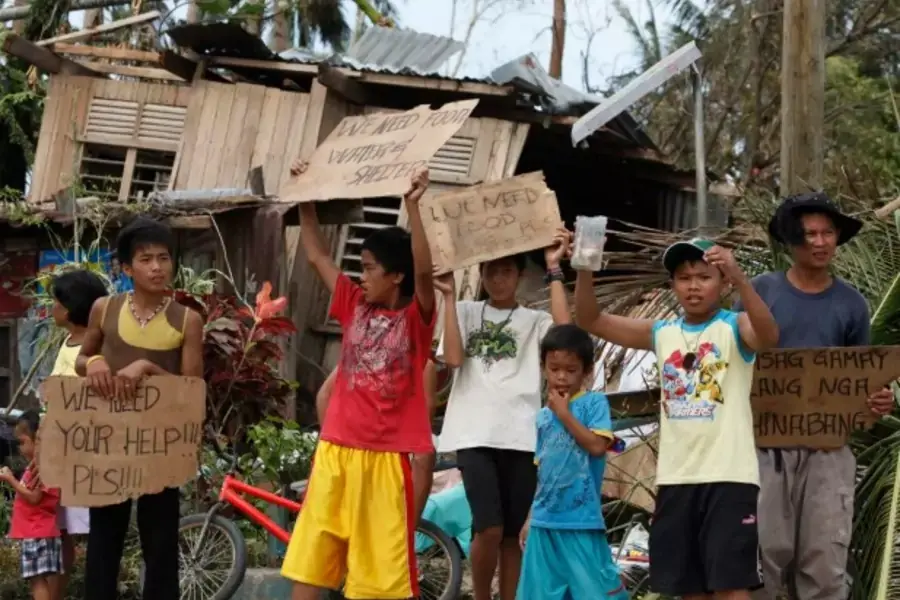Typhoon Haiyan

More on:
In the wake of one of the most powerful storms ever to hit Southeast Asia, Typhoon Haiyan, the Philippines is counting its dead and assessing the massive damage to infrastructure from the storm, particularly in Leyte province. The scope of the devastation in Leyte was, on Sunday, being compared by some disaster specialists to the destruction wrought by the 2004 Asian tsunami, which completely leveled parts of Aceh in Indonesia and other parts of Southeast Asia, like the Thai coast around Phuket. The typhoon was more powerful than most, but the Philippines has, sadly, become used to this type of devastation: the country is right in the path of the most dangerous Asian typhoons, and was hit by another deadly storm only a few weeks ago.
The Philippines suffers from bad luck, and as one of the poorest countries in East Asia, it could not be expected to have the storm warning systems and storm-safe infrastructure of countries like Japan or Singapore. Still, the horrific quality of infrastructure in the Philippines—even worse than countries in the region with similar levels of economic development—certainly has made these storms deadlier. Because the Philippines is one of the most unequal and corrupt countries in Asia, funds for housing projects, roads, and seawalls and other public monies routinely vanish into the pockets of political dynasties; before the typhoon the country was riveted by a high-profile case involving massive slush funds amassed by several prominent politicians. Several news reports about Typhoon Haiyan already have noted that the horrendous, ramshackle nature of storm protection and houses in Leyte contributed to the high death toll and property damage.
Although President Benigno Aquino has made some inroads into fighting corruption, his administration still faces an uphill battle, and many areas, including Leyte, remain dominated by patronage networks and a few political clans. The continuing feudalism has made it hard to attract investment in infrastructure, and the country certainly has not helped the cause of infrastructure upgrading by alienating China, whose state-owned companies have been busily building infrastructure for most other countries in Southeast Asia.
The most recent high-profile corruption scandal appears to have catalyzed middle-class Filipino sentiment, potentially leading to the type of public outcry against corruption that could actually turn the country’s political course. In the terrible aftermath of Typhoon Haiyan, public pressure to reduce graft in construction projects, and to focus more intensely on upgrading infrastructure, would be at least one positive outcome.
More on:
 Online Store
Online Store